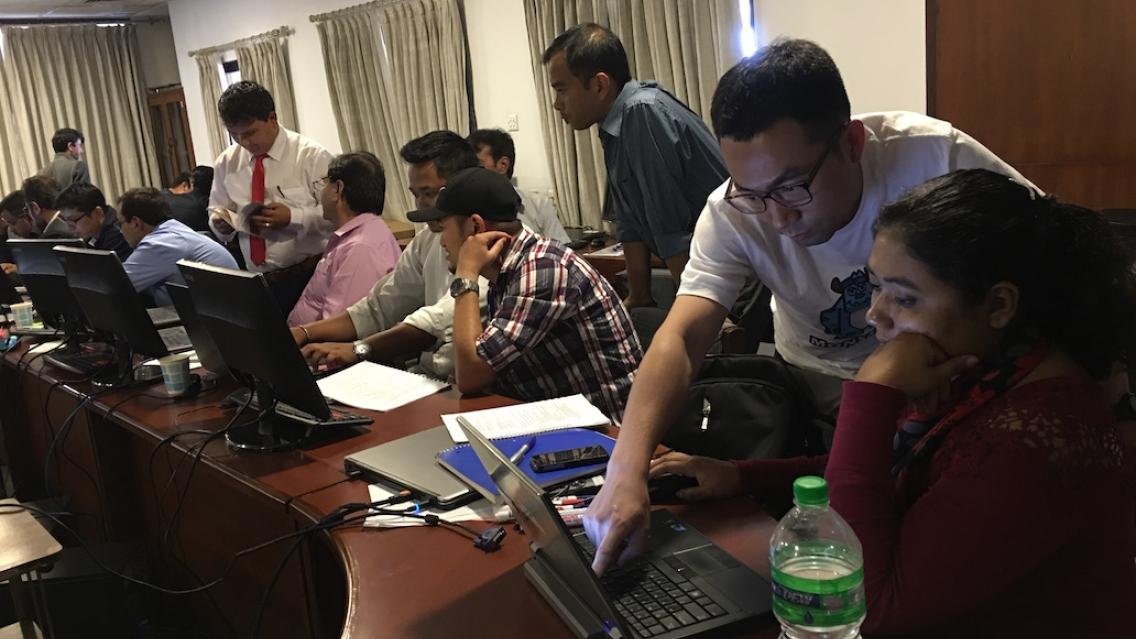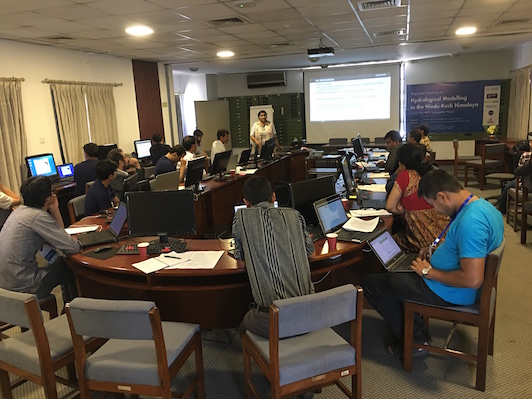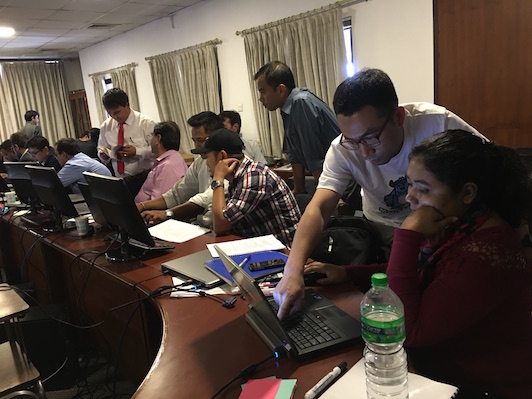Enhancing capacity in hydrological modeling

Begum Rushi from the SERVIR Science Coordination Office and Pradeep Dangal from the International Centre for Integrated Mountain Development (ICIMOD)/SERVIR-Hindu Kush Himalaya led a training on the Variable Infiltration Capacity (VIC) hydrological model at ICIMOD in Kathmandu, Nepal, 21 - 23 May 2017. The objective was to build capacity within ICIMOD to use the VIC model for future studies in this region. The event drew ICIMOD team members as well as stakeholders from universities, research organizations, and government agencies of Afghanistan, Bangladesh, Bhutan, China, India, Nepal, and Pakistan.
 |
| Begum Rushi addresses training participants |
Hydrological modeling, used for predicting and forecasting streamflow and providing an account of overall water availability, is an expressed need in the HKH region. The VIC model has proven useful in several applications of streamflow predictions and forecasting.
The SERVIR/ICIMOD training provided guidance on VIC set up and implementation and included hands-on experience applying VIC to a local river basin in the Hindu Kush-Himalaya area. The trained participants are now equipped to manipulate and implement the VIC hydrological model for future applications in climate, environmental, and agricultural studies. The end goal of this training was to equip various sectors in the region with tools for improved services related to water and water related disasters.
“The beauty of the training was that the participants were all from the HKH region, therefore dealing almost similar types of watersheds or basins,” noted Manzoor Ahmad Malik, from the Pakistan Council of Research on Water Resources. “Moreover, the resource persons were also from the same region, and were very well conversant with the models and highly enthusiastic …. They took the participants interactively all the way from the steps of model installation, data input, model running, sensitivity analysis, calibration and validation etc., and successfully got it completed by the participants themselves. [The training] also provided opportunities to the participants to share their issues and problems and better networking for problems solving.”
Officials from the Bangladesh Institute of Water and Flood Management (IWFM) also commented.
 |
| Participants receive hands-on training in running the VIC model |
“… we are going to set up SPHY [the Spatial Processes in Hydrology model] for the Dhaka watershed within the next two months, and VIC is next in our agenda,” said Partho Das, from IWFM. “… I will definitely use it considering its good sides that you showed during training. … then I will disseminate my learning on VIC.”
Similarly, Malik noted that the VIC model is useful for Pakistan. In addition, he expressed his appreciation of the trainers:
“It was a matter of great pleasure that the HKH region has developed a generation of young, competent, energetic and enthusiastic resource persons for imparting hydrological modeling training to address the climate change implications of the most challenging region of the world.”

